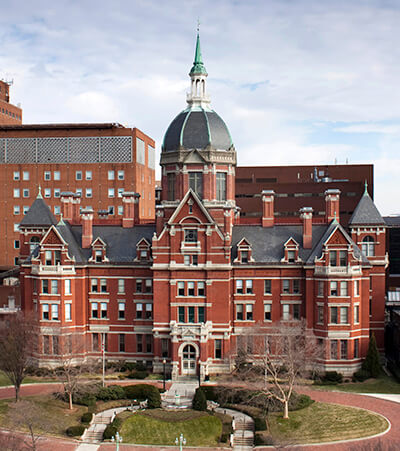DOS_patos
Unverified Legion of Trill member
In 1951, a young mother of five named Henrietta Lacks visited The Johns Hopkins Hospital complaining of vaginal bleeding. Upon examination, renowned gynecologist Dr. Howard Jones discovered a large, malignant tumor on her cervix. At the time, The Johns Hopkins Hospital was one of only a few hospitals to treat poor African-Americans.
As medical records show, Mrs. Lacks began undergoing radium treatments for her cervical cancer. This was the best medical treatment available at the time for this terrible disease. A sample of her cancer cells retrieved during a biopsy were sent to Dr. George Gey's nearby tissue lab. For years, Dr. Gey, a prominent cancer and virus researcher, had been collecting cells from all patients who came to The Johns Hopkins Hospital with cervical cancer, but each sample quickly died in Dr. Gey’s lab. What he would soon discover was that Mrs. Lacks’ cells were unlike any of the others he had ever seen: where other cells would die, Mrs. Lacks' cells doubled every 20 to 24 hours.
Today, these incredible cells— nicknamed "HeLa" cells, from the first two letters of her first and last names — are used to study the effects of toxins, drugs, hormones and viruses on the growth of cancer cells without experimenting on humans. They have been used to test the effects of radiation and poisons, to study the human genome, to learn more about how viruses work, and played a crucial role in the development of the polio vaccine.
Although Mrs. Lacks ultimately passed away on October 4, 1951, at the age of 31, her cells continue to impact the world.
The Importance of HeLa Cells

Among the important scientific discoveries of the last century was the first immortal human cell line known as “HeLa” — a remarkably durable and prolific line of cells obtained during the treatment of Henrietta’s cancer by Johns Hopkins researcher Dr. George Gey in 1951.
Although these were the first cells that could be easily shared and multiplied in a lab setting, Johns Hopkins has never sold or profited from the discovery or distribution of HeLa cells and does not own the rights to the HeLa cell line. Rather, Johns Hopkins offered HeLa cells freely and widely for scientific research.
Over the past several decades, this cell line has contributed to many medical breakthroughs, from research on the effects of zero gravity in outer space and the development of the polio vaccine, to the study of leukemia, the AIDS virus and cancer worldwide.
Although many other cell lines are in use today, HeLa cells have supported advances in most fields of medical research in the years since HeLa cells were isolated.
As medical records show, Mrs. Lacks began undergoing radium treatments for her cervical cancer. This was the best medical treatment available at the time for this terrible disease. A sample of her cancer cells retrieved during a biopsy were sent to Dr. George Gey's nearby tissue lab. For years, Dr. Gey, a prominent cancer and virus researcher, had been collecting cells from all patients who came to The Johns Hopkins Hospital with cervical cancer, but each sample quickly died in Dr. Gey’s lab. What he would soon discover was that Mrs. Lacks’ cells were unlike any of the others he had ever seen: where other cells would die, Mrs. Lacks' cells doubled every 20 to 24 hours.
Today, these incredible cells— nicknamed "HeLa" cells, from the first two letters of her first and last names — are used to study the effects of toxins, drugs, hormones and viruses on the growth of cancer cells without experimenting on humans. They have been used to test the effects of radiation and poisons, to study the human genome, to learn more about how viruses work, and played a crucial role in the development of the polio vaccine.
Although Mrs. Lacks ultimately passed away on October 4, 1951, at the age of 31, her cells continue to impact the world.
The Importance of HeLa Cells

Among the important scientific discoveries of the last century was the first immortal human cell line known as “HeLa” — a remarkably durable and prolific line of cells obtained during the treatment of Henrietta’s cancer by Johns Hopkins researcher Dr. George Gey in 1951.
Although these were the first cells that could be easily shared and multiplied in a lab setting, Johns Hopkins has never sold or profited from the discovery or distribution of HeLa cells and does not own the rights to the HeLa cell line. Rather, Johns Hopkins offered HeLa cells freely and widely for scientific research.
Over the past several decades, this cell line has contributed to many medical breakthroughs, from research on the effects of zero gravity in outer space and the development of the polio vaccine, to the study of leukemia, the AIDS virus and cancer worldwide.
Although many other cell lines are in use today, HeLa cells have supported advances in most fields of medical research in the years since HeLa cells were isolated.




